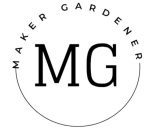This is a blog post on making an organic indigo vat. After my initial experiments using thiox in indigo vat I have decided to move to a much more environmentally friendly indigo vat. Here is my old blog post on how to make thiox indigo vat. Although it is more environmentally friendly it is also much harder to make as it takes a longer time. It also depends on the quality of the ingredients. Fructose vat works well with fructose from fruits or maltose. Not so with commercially bought fructose powder.
Organic vats have advantages over Thiox vats as the blues color layers build up much slower. One can also choose to handle the vat by hand and work in close ventilated spaces. It is important to consider those cold rainy days and winter months.

Making organic indigo vat.
When it comes to organic indigo vat most dyers will know 1-2-3 vat as it uses 1 part indigo, 2 parts calyx (calcium hydroxide), and 3 parts fructose. It uses fructose powder so it is quite popular as fructose is easily stored. So fructose acts as a reducing agent and calyx as a base. In general 2 grams of indigo/ liter of vat for a light color. 8-10 grams of indigo/ liter for strong color.
The parts of indigo and calyx get complicated when using fresh indigo leaves that have calyx added. Calyx is normally added so that the indigo separates from the leaves. Fructose is available to buy from large supermarkets or online. It is possible to use fructose from fruits that contain lots of natural sugars like bananas, grapes, or dates. However, when using fruits it is hard to measure how much to measure roughly about 800 grams of bananas and fruit to 25 grams of indigo. Otherwise, it would just be a banana vat or fruit vat.

My experience so far I use a combination of powdered fructose and fruit. I start off with powdered fructose if it doesn’t reduce I tweaked the vat by adding more pureed cooked fruit. Heating the vat up helps in 1-2-3 vat. It just helps to oxidize the vat to about 40-50 deg cel. Once the chemistry is balanced a telltale indigo cauliflower should form and the bubbles on the vat are blue, not white. There is also a coppery sheen on the surface of the vat. Leuco indigo liquid can be yellowish-green to coppery red color.
If fructose 1-2-3 vat falls apart (doesn’t dye or show classic signs) don’t despair it has happened to me before. The above vat has since got henna, banana, maltose, and malthouse flour that’s beside the basic indigo, calyx, and fructose powder.
A big issue of organic vat is sediment which is a lot of it as time goes by. When dyeing it’s only the liquid that is reduced that dyes. It is best to use a basket to reduce the sediments from getting to the fabric. Sediments can add a layer of ‘false dyed’ indigo which makes the dyed fabric patchy after washing.
I would like to thank Catherine Ellis for giving some wonderful tips on making an organic indigo vat.


